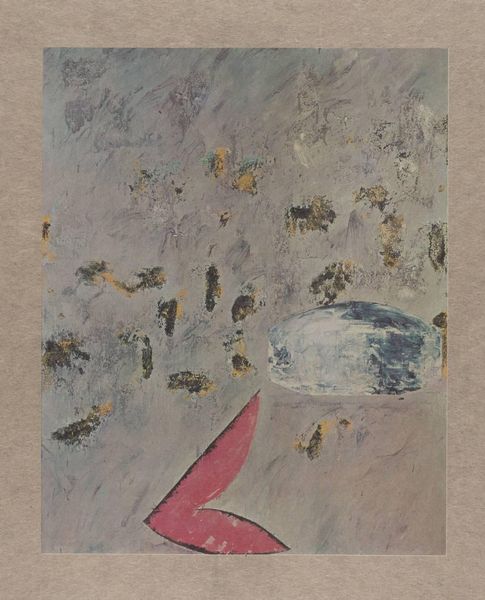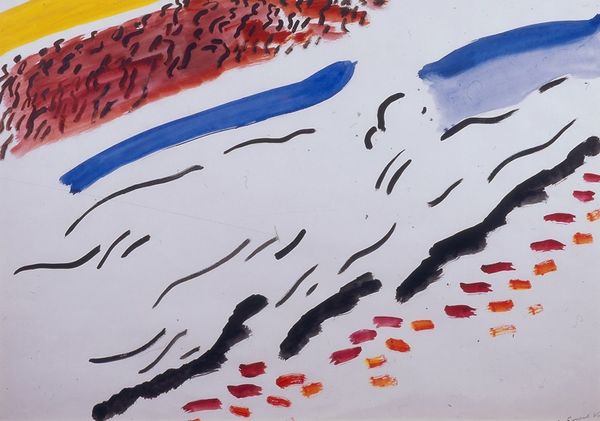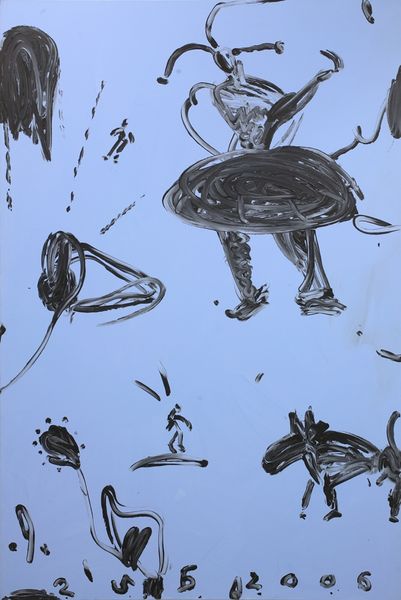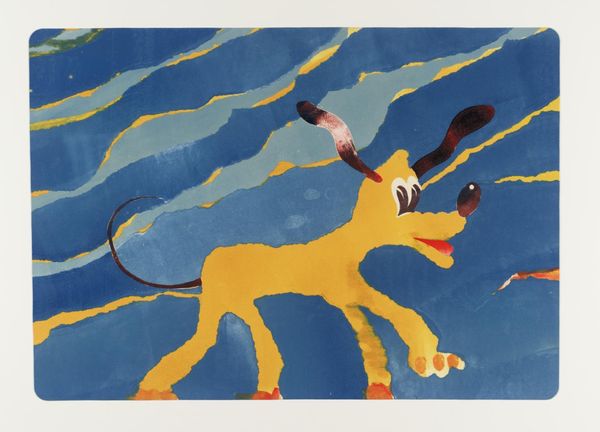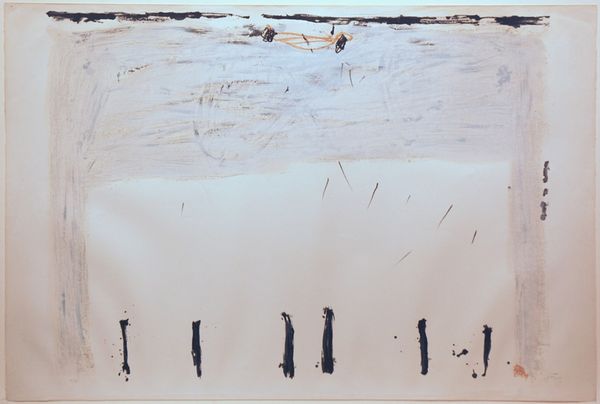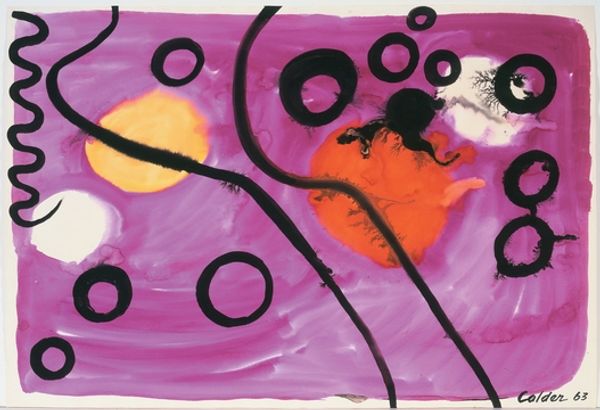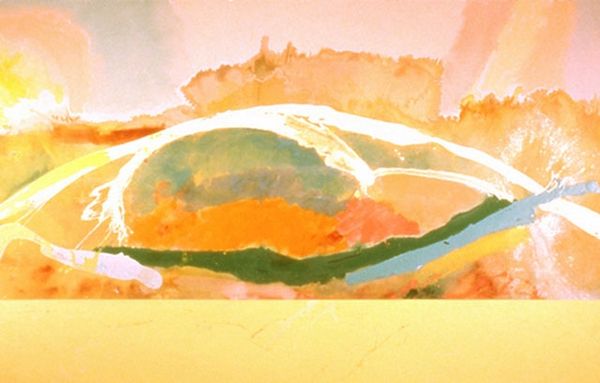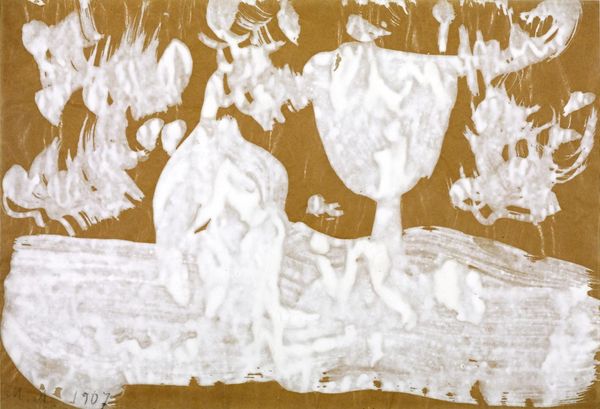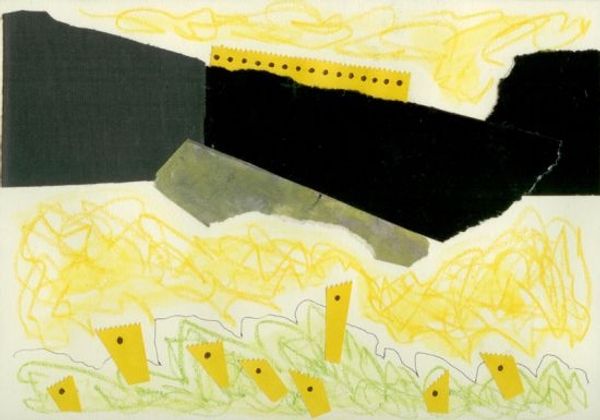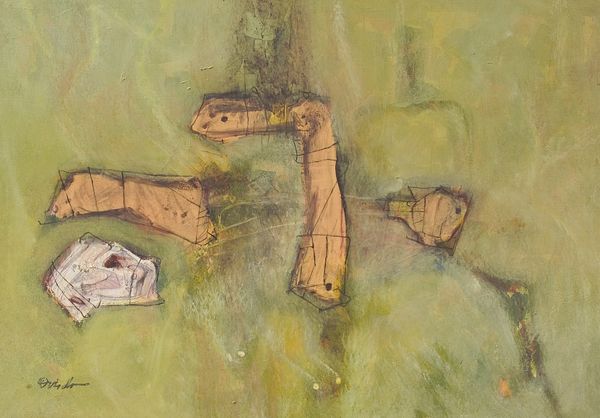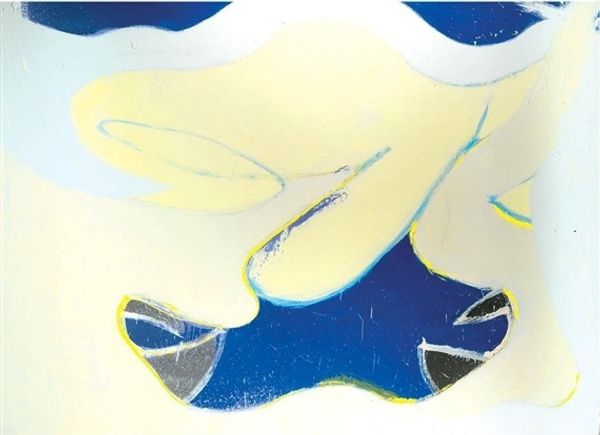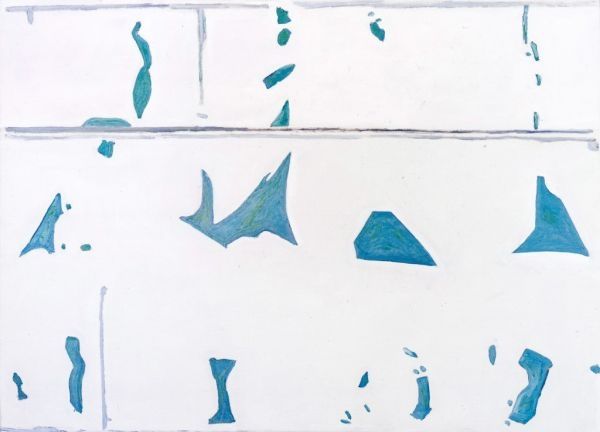
#
pop art-esque
#
tropical
#
mother nature
#
pop art
#
fluid art
#
acrylic on canvas
#
spray can art
#
naive art
#
pop art-influence
#
remaining negative space
Dimensions: 20 x 80 cm
Copyright: Creative Commons NonCommercial
Curator: Here we have Alfred Freddy Krupa’s "Interstellar Love," created in 2021. It's an acrylic on canvas piece, quite striking in its composition. What are your initial thoughts? Editor: I am immediately drawn to the materiality of this artwork; its acrylic medium lends it a dynamic quality, almost as if I can feel the textural layers. There is such movement within what feels like both deliberate brushwork and uncontrolled splatters, evoking energy, doesn’t it? Curator: Yes, indeed. Notice how Krupa employs a rather bold palette, primarily a vibrant yellow juxtaposed with earthy greens, with remaining negative spaces playing a crucial part in delineating forms, giving it an interesting interplay between representation and abstraction. It is as if he's intentionally dismantling our conventional understanding of figure and ground relationships. Editor: Considering the 'spray can art' tag, I imagine the material application involved both calculated gestures and chance. The creation probably relies heavily on improvisation with tools that often democratize art making. Curator: True. The artist disrupts pictorial space in compelling ways. Semiotically, this may signify the instability of love. The butterfly motif too; perhaps it refers to fragility or transformation? It could indicate love's delicate, transitory essence. Editor: Looking at those broad areas of unworked white canvas, I can’t help but appreciate its directness. Those stark patches could highlight art making as a physical undertaking rather than some cerebral pursuit. Are these forms emerging almost accidentally from an interaction with the medium? Curator: Intriguing. The negative spaces really bring out this painting's playful approach. If we consider post-structuralist critiques, does its non-hierarchical composition propose a departure from traditional representations of romance? Editor: Perhaps. The canvas and paint carry more importance here than narrative itself. The image allows for viewers to reflect on their own experiences or conceptions. Curator: Reflecting on the composition’s construction, the semiotic fragmentation offers an intriguing deconstruction of love, pushing the boundaries within artistic conventions. Editor: For me, it remains potent because of its tangible connection to both artistic creation and an interpretation that values materiality above representation.
Comments
No comments
Be the first to comment and join the conversation on the ultimate creative platform.

